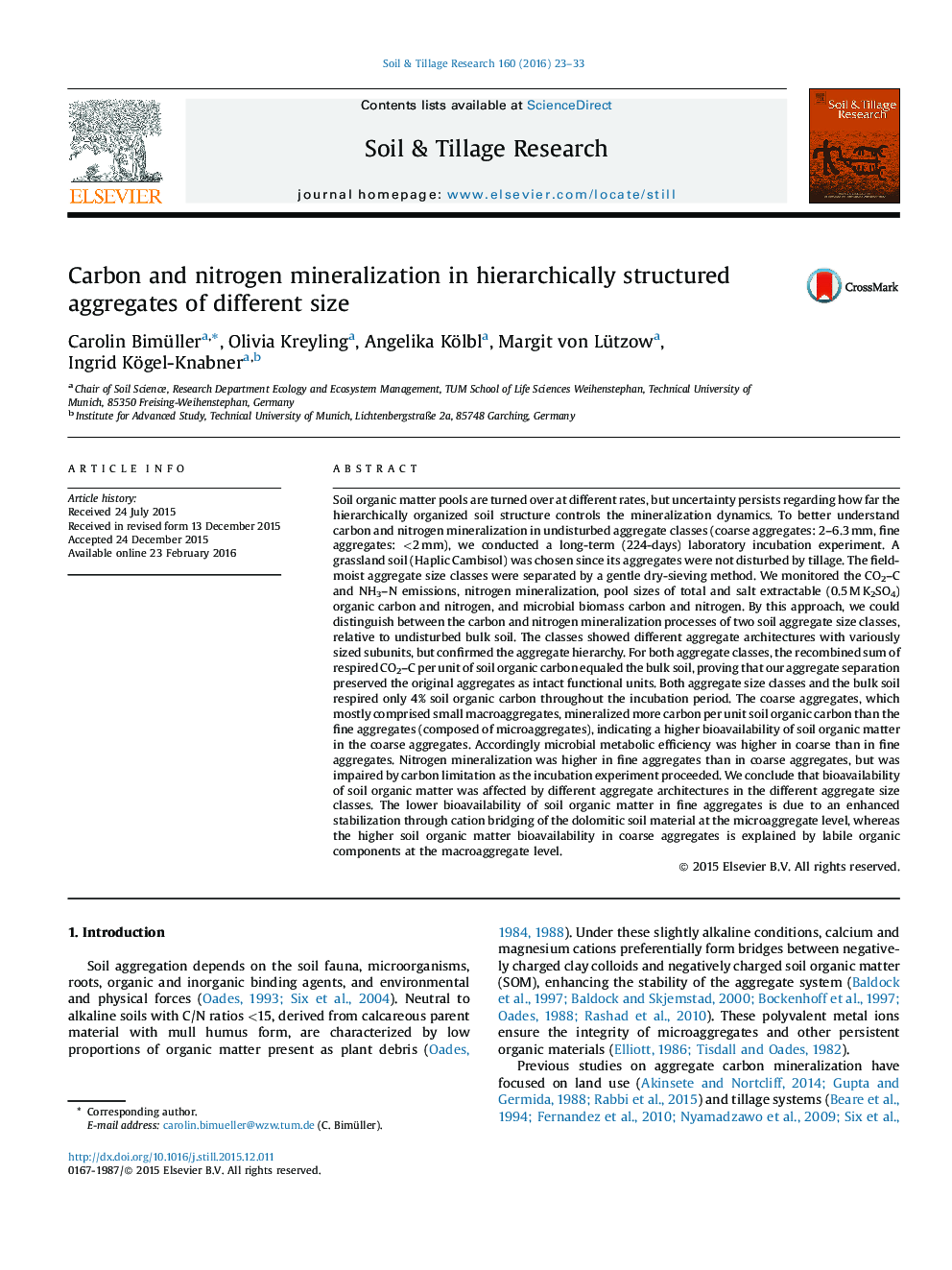| کد مقاله | کد نشریه | سال انتشار | مقاله انگلیسی | نسخه تمام متن |
|---|---|---|---|---|
| 305339 | 513024 | 2016 | 11 صفحه PDF | دانلود رایگان |
• Coarse aggregates (2–6.3 mm) comprised small macroaggregates.
• Fine aggregates (<2 mm) were composed of microaggregates.
• Soil organic carbon was better bioavailable in coarse than fine aggregates.
• Nitrogen mineralization was impaired by carbon limitation.
• Aggregate architecture determines the bioavailability of soil organic matter.
Soil organic matter pools are turned over at different rates, but uncertainty persists regarding how far the hierarchically organized soil structure controls the mineralization dynamics. To better understand carbon and nitrogen mineralization in undisturbed aggregate classes (coarse aggregates: 2–6.3 mm, fine aggregates: <2 mm), we conducted a long-term (224-days) laboratory incubation experiment. A grassland soil (Haplic Cambisol) was chosen since its aggregates were not disturbed by tillage. The field-moist aggregate size classes were separated by a gentle dry-sieving method. We monitored the CO2–C and NH3–N emissions, nitrogen mineralization, pool sizes of total and salt extractable (0.5 M K2SO4) organic carbon and nitrogen, and microbial biomass carbon and nitrogen. By this approach, we could distinguish between the carbon and nitrogen mineralization processes of two soil aggregate size classes, relative to undisturbed bulk soil. The classes showed different aggregate architectures with variously sized subunits, but confirmed the aggregate hierarchy. For both aggregate classes, the recombined sum of respired CO2–C per unit of soil organic carbon equaled the bulk soil, proving that our aggregate separation preserved the original aggregates as intact functional units. Both aggregate size classes and the bulk soil respired only 4% soil organic carbon throughout the incubation period. The coarse aggregates, which mostly comprised small macroaggregates, mineralized more carbon per unit soil organic carbon than the fine aggregates (composed of microaggregates), indicating a higher bioavailability of soil organic matter in the coarse aggregates. Accordingly microbial metabolic efficiency was higher in coarse than in fine aggregates. Nitrogen mineralization was higher in fine aggregates than in coarse aggregates, but was impaired by carbon limitation as the incubation experiment proceeded. We conclude that bioavailability of soil organic matter was affected by different aggregate architectures in the different aggregate size classes. The lower bioavailability of soil organic matter in fine aggregates is due to an enhanced stabilization through cation bridging of the dolomitic soil material at the microaggregate level, whereas the higher soil organic matter bioavailability in coarse aggregates is explained by labile organic components at the macroaggregate level.
Figure optionsDownload as PowerPoint slide
Journal: Soil and Tillage Research - Volume 160, July 2016, Pages 23–33
